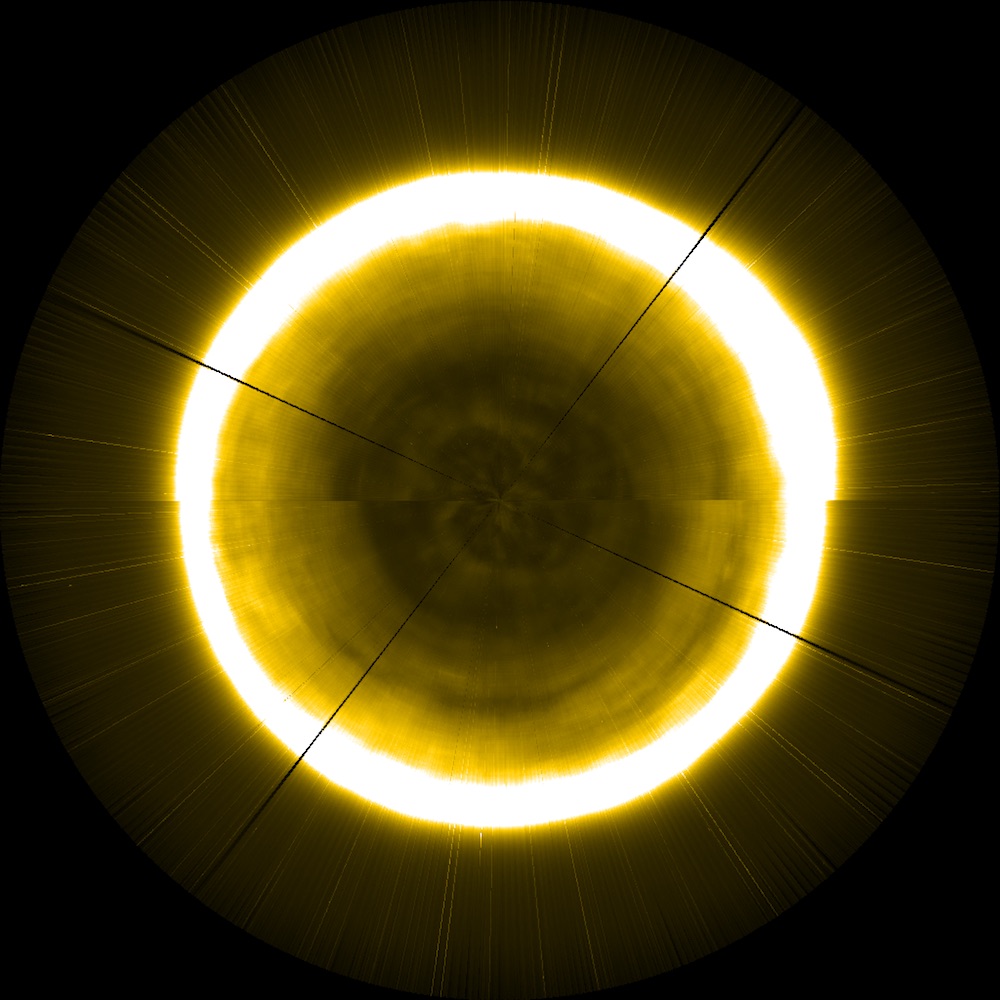The Sun's Turbulent North Pole Looks Like a Spooky Vortex in This Composite Image

As winter descends on the Northern Hemisphere like so many dinner guests upon a plate of latkes, it's a fine time to start dreaming of warmer climes. Today, may we recommend a visit to the north pole of the sun? (Today's forecast calls for a low of about 7,300 degrees Fahrenheit, or 4,000 degrees Celsius.)
Even with satellite footage, our view of the sun is pretty much limited to the solar disc — the circular profile of the sun that we can see plainly from Earth. The northern and southern poles of our closest star have never been directly observed, but scientists at the European Space Agency have made a habit of creating daily composite images of the sun's north pole using some clever time-lapse photography. Yesterday's image (Dec. 3), highlighted in a blog post on the ESA's website, gives you a taste of the swirling, turbulent sea of plasma hidden atop the sun's head. [Fiery Folklore: 5 Dazzling Sun Myths | May 20 Solar Eclipse]
Using data from the ESA's Proba-2 satellite, which launched in 2009 to observe the sun and the plasma weather it flings our way, scientists can observe the sun's atmosphere as it arcs around the edges of the solar disc and over the top of the sun's northern pole. As the sun's surface swirls and rotates throughout the day, altering the atmosphere above it, the satellite takes additional images that can be combined with one another to create a time-lapse picture of the changing atmosphere over the sun's north pole. (You can see a cartoon depicting the ESA's entire composite image process here.)
It's not a complete picture — the ESA says we won't have one of those until the launch of the agency's Solar Orbiter mission in 2020 — but it does provide a good sense of what's happening just out of sight on the cap of our closest star. If you look at yesterday's image, for example, you can see a dark vortex bubbling around the pole's center. According to the ESA, that's a coronal hole — a thin region on the sun's surface where plasma is colder and less dense than usual, and more likely to eject blistering solar winds into space.
Observing the poles directly will give scientists a clearer understanding of how the particles spewed forth from these coronal holes impact the rest of our solar system, including EarthAlas, those charged particles of solar energy probably won't make winter on Earth any warmer — but they might make it a little more colorful.
- Photos of Annular Solar Eclipse: May 20,
- Gorgeous Images of the Sun's Corona in Simulation
- Rainbow Album: The Many Colors of the Sun
Originally published on Live Science.
Sign up for the Live Science daily newsletter now
Get the world’s most fascinating discoveries delivered straight to your inbox.

Brandon is the space/physics editor at Live Science. His writing has appeared in The Washington Post, Reader's Digest, CBS.com, the Richard Dawkins Foundation website and other outlets. He holds a bachelor's degree in creative writing from the University of Arizona, with minors in journalism and media arts. He enjoys writing most about space, geoscience and the mysteries of the universe.










